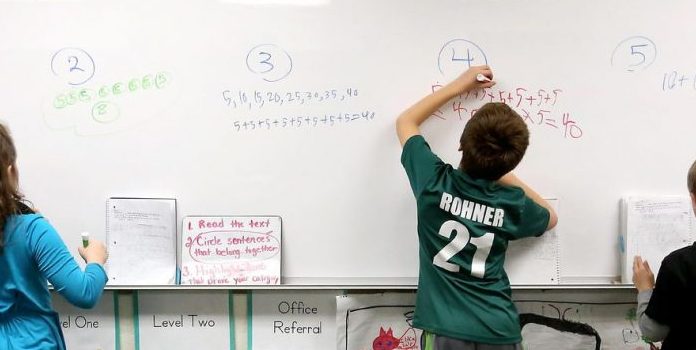The number of teachers in the U.S. has increased from 2013 to 2020 while the number of students has decreased, according to data from the National Education Association, the nation’s largest public-school union, The Center Square reported.
While total enrollment has dropped 1.4% over those seven years, there has been a 2.3% increase in the number of public-school teachers.
Still, nationwide claims of a teacher shortage persist.
In May 2022, the Birmingham News reported a state school board member said Alabama wasn’t doing enough to solve the teacher shortage.
However, there has been a slight increase in the number of Alabama-based teachers while enrollment has dropped 2.8% from 2013 to 2020.
New York has seen a 4.1% drop in student enrollment in public schools, accompanied by a 6.5% increase in the number of teachers from 2013 to 2020, according to NEA figures.
However, the New York State United Teachers Union said it was in the midst of a teacher shortage in November 2019.
That follows the national trend. There were 1.4% fewer students in U.S. public schools from 2013 to 2020, while the number of teachers increased by 2.3%. Public school teachers increased from 3.12 million in 2013 to 3.19 million in 2021, while enrollment dropped from 49.5 million to 48.8 million over that span, according to data from the NEA, which has been making claims of teacher shortages as far back as 2016.
In 2016, the NEA published a story with the headline: “Report: Teacher Shortage Crisis Can Be Averted by Keeping Educators in the Profession.”
In February 2022, an NEA news release headline stated, “Massive staff shortages in schools leading to educator burnout; alarming number of educators indicating they plan to leave profession.”
The NEA did not respond to a request for comment.
Although there are more teachers, there are areas of teaching where there are shortages. The U.S. Department of Education has tracked critical shortage areas as far back as 1990. The U.S. Department of Education data shows that areas such as foreign language and special education have been historically short of teachers.
Teacher union contracts generally don’t recognize the difficulty of a specific teaching position when considering compensation. Some contracts do. For example, in the Philadelphia Public School District, the union contract does have a salary schedule separate from regular teachers for special education. For example, a first-year teacher with a bachelor’s degree would have a first-year salary of $48,490, but if that same teacher went into special education, the first-year pay would increase to $49,382.

